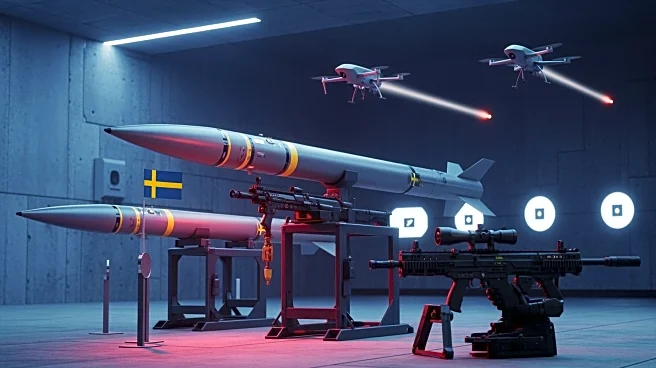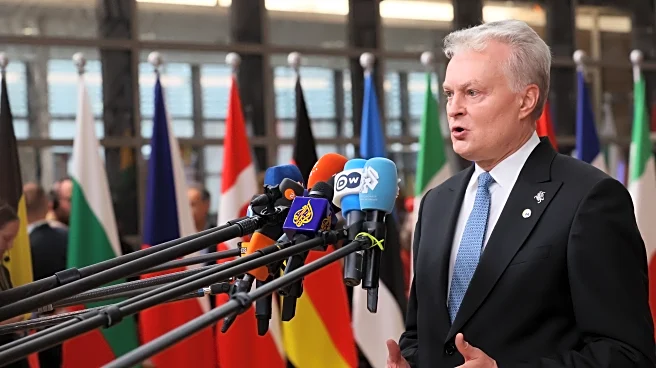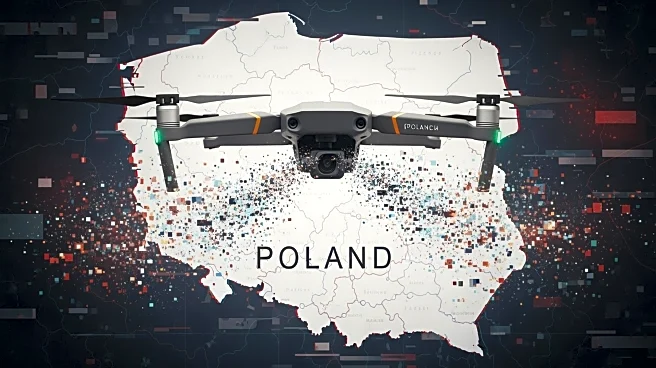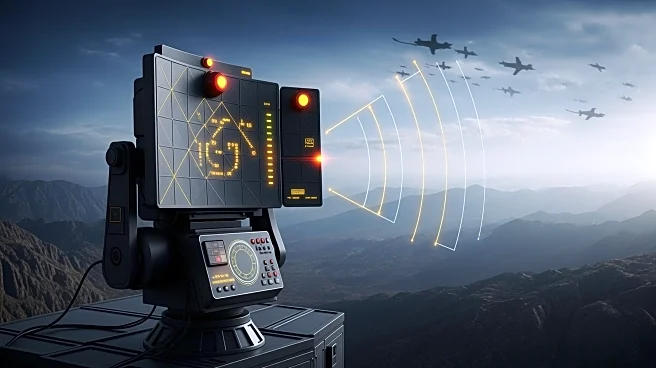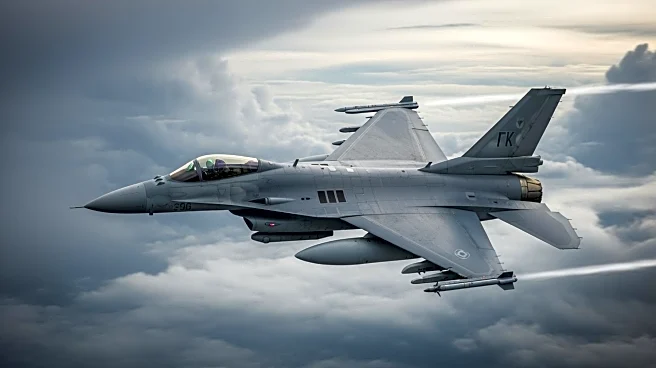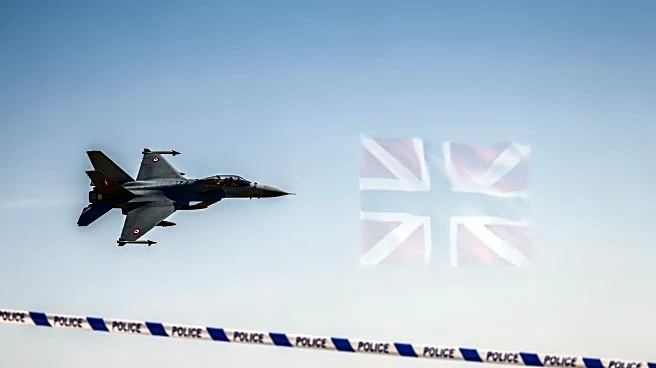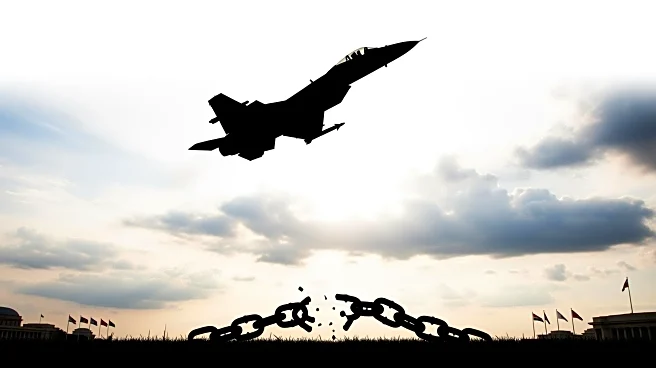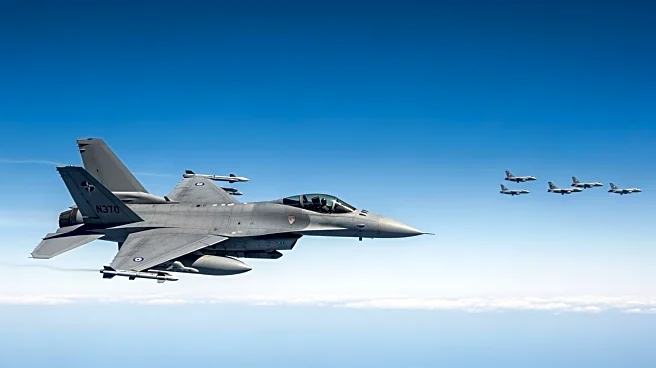What's Happening?
The Lithuanian Army has conducted tests using heavy machine guns and Swedish-designed RBS 70 NG surface-to-air missiles against high-speed drones. This exercise, which took place at the General Silvestras Žukauskas training ground near the Belarus border,
is part of a broader effort by militaries to explore firearms as a last-resort countermeasure against drones. The Lithuanian armed forces released a video showcasing air defense artillery units engaging target drones with large-caliber machine guns and launching missiles. This drill follows Lithuania's recent legislative change allowing the military to shoot down hostile drones, enhancing its ability to respond swiftly to airspace violations. Lithuanian President Gitanas Nausėda recently reported a violation of Lithuania's airspace by Russian military planes, highlighting the importance of these defensive measures.
Why It's Important?
The testing of firearms and missiles against drones by the Lithuanian Army underscores the growing concern among militaries about the threat posed by drones, particularly in the context of regional tensions with Russia. The ability to effectively counter drones is crucial for national security, especially for countries like Lithuania that share borders with potentially hostile neighbors. The development and testing of such countermeasures could influence military strategies and procurement decisions across Europe and beyond. Additionally, the use of firearms as a cost-effective alternative to missiles for drone defense could become a significant trend, offering a scalable solution to the challenge of drone swarms.
What's Next?
As Lithuania continues to enhance its drone defense capabilities, other countries may follow suit, adopting similar measures to protect their airspace. The effectiveness of these tests could lead to further investment in firearms and missile systems designed to counter drones. Additionally, the international community will likely monitor Lithuania's actions closely, especially given the recent airspace violations by Russia. This situation may prompt discussions on regional security and defense collaborations among NATO allies.
Beyond the Headlines
The increasing reliance on drones in modern warfare raises ethical and legal questions about airspace sovereignty and the rules of engagement. The development of counter-drone technologies also highlights the ongoing arms race in military technology, where nations must continuously adapt to new threats. The use of firearms against drones, while cost-effective, may also lead to unintended consequences, such as collateral damage or escalation of conflicts.
